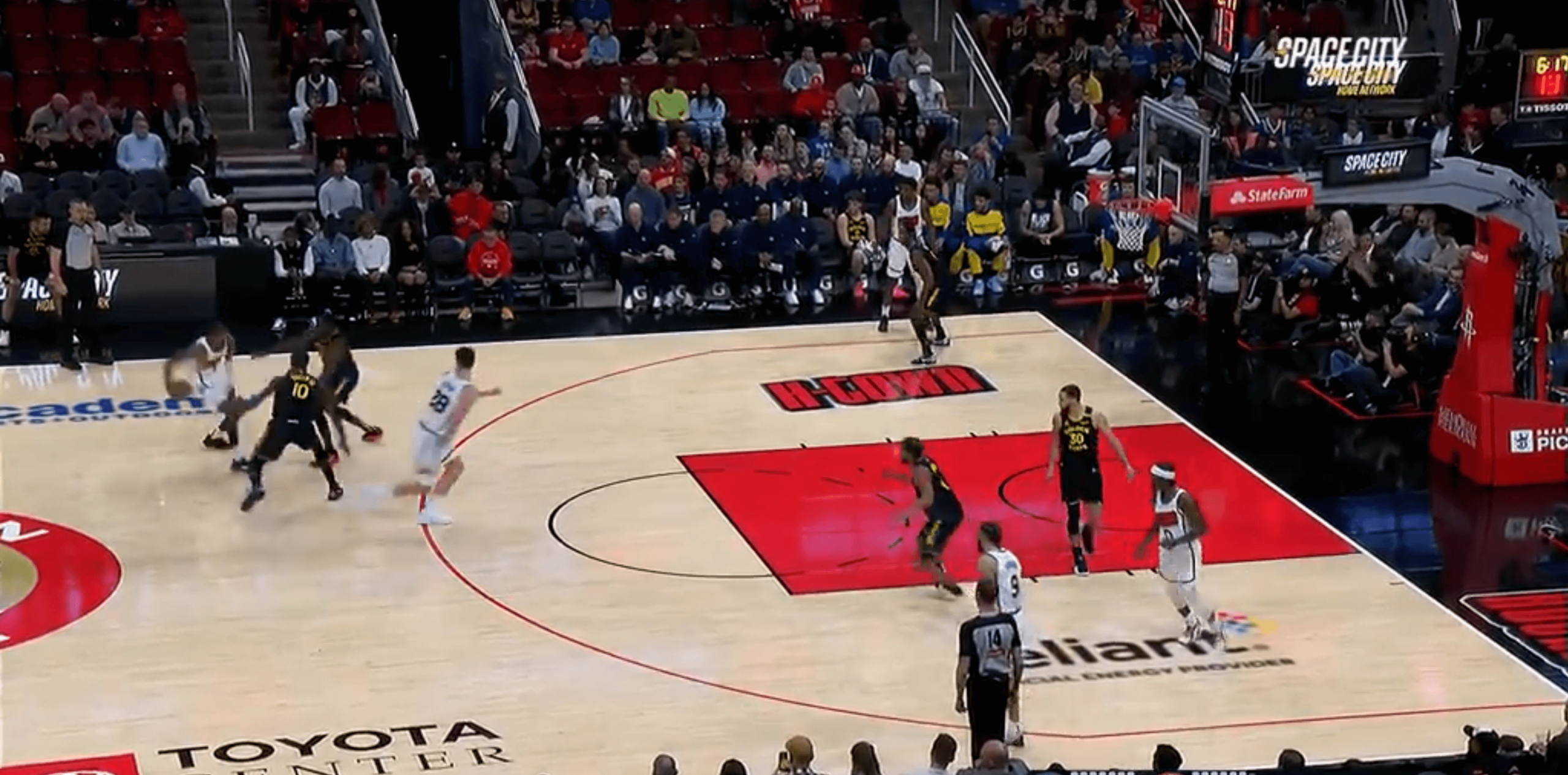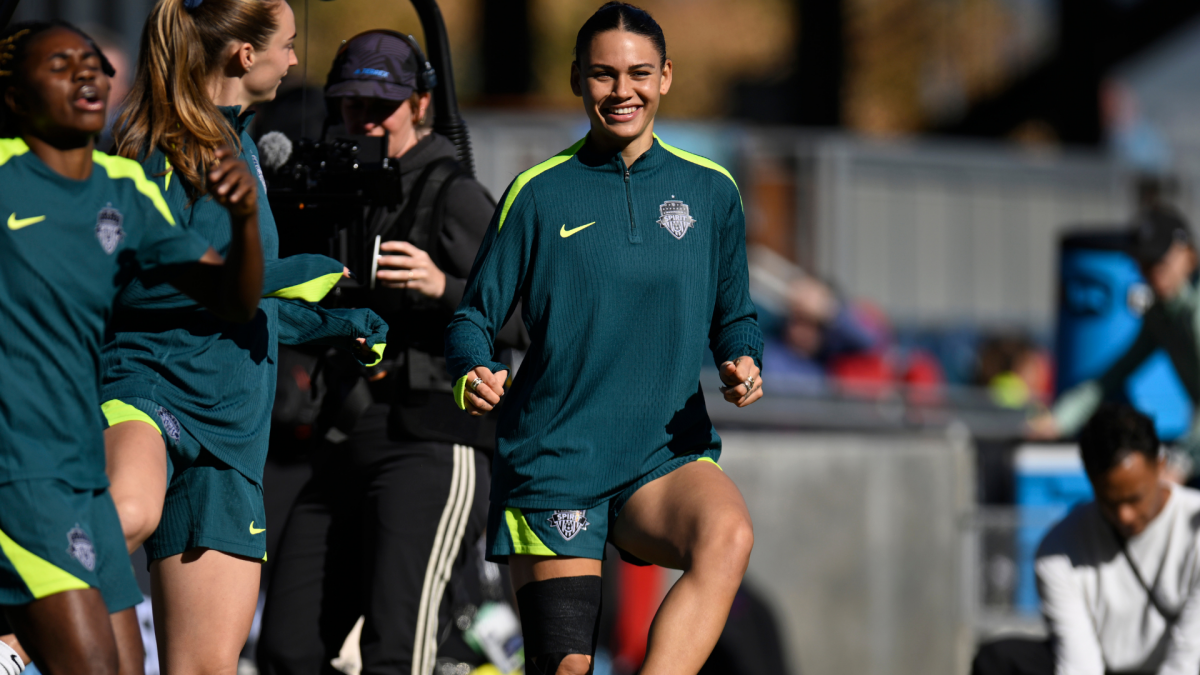
HOUSTON— Houston Rockets head coach Ime Udoka addressed the media on Wednesday in his first news conference since learning his team would face the Golden State Warriors in the first round. He couldn’t quite focus.
Every few seconds, whether he was being asked or answering a question, Udoka’s eyes would dance, peering off to the opposite corners of the gym. It didn’t matter that the day’s session was over and the smattering of players remaining on the court were winding down. Udoka wanted to pay attention to every drill happening in his vicinity.
Advertisement
That level of attentiveness is what the playoffs are about. And in playing Golden State, an organization that has seen postseason success, Houston will need cohesion, communication and control.
“Attention to detail and great execution,” Udoka said of what he’s expecting from his team. “Golden State does some unique things. Have to really lock in on that, follow the game plan and be very specific on guarding certain actions and certain players.”
In preparation for Game 1 against the Warriors on Sunday, Udoka is putting his team through what he calls a “second training camp.” The goal is to get the Rockets out of regular-season mode, recalibrate their approach toward a respected playoff opponent and clean up any gray areas of their efficiency at both ends of the floor.
Yes, Houston is the No. 2 seed in the Western Conference and enters the playoffs as winners of 15 out of their last 20 games. Yes, they are pound for pound the most physical and aggressive defense in the NBA and should thrive in the postseason where officiating isn’t as tight. But Golden State, with playoff and championship experience on the roster, is prepared — and public perception favors them heading into the series. According to BetMGM, the Warriors are the current favorites (-160) to advance, surprising for a No. 2 vs. No. 7 matchup.
Defensively, it’s well-documented how Houston will approach things. At the other end of the floor, however, it’s less rigid for a team that finished the season just outside the bottom-five in effective field goal percentage (52.6 percent, 24th).
From an offensive standpoint, the Rockets tend to buck the status quo.
On paper, this should be a team that has a healthy inside-outside balance, with a proficient post presence in Alperen Şengün and several above-average perimeter shooters. Houston should often find a happy medium using their athleticism and speed (Jalen Green, Amen Thompson) to drive into defenses, using their gravity and decision-making to generate the best shot on any given possession.
Advertisement
The issue is offensively, the Rockets don’t have a consistent identity to home in on. Sometimes, it gives them an advantage as an element of surprise — it’s difficult for opponents to develop a defensive scheme when they don’t know what to expect — but it also leaves room for potential chaos.
In theory, the Rockets should be among the league leaders in the pervasive pace-and-space era for the reasons mentioned above. Instead, they’re 18th in pace, 20th in 3-point shots and 21st in 3-point accuracy. They’ve become more comfortable packing the paint, deploying double-big lineups (which are awesome, by the way) and attacking the interior than anything else.
So how does Green factor in this?
Houston’s equal-opportunity offense affords the likes of Şengün, Green, Thompson and Fred VanVleet to shoulder playmaking responsibilities, using their wide-ranging abilities to create offense in various ways. As it relates to Green — particularly with his individual growth as a passer and Golden State’s historical approach to defending him — his decision-making remains an X-factor in this series.
Before the All-Star break, Green averaged 5.9 potential assists per game, according to NBA.com tracking data. That figure jumped to 8.3 in the 27 games following the break. The reason why “potential assists” are a useful measuring tool is that they’re primarily concerned with the work done before the actual shot.
For example, let’s imagine Green made the 10 passes to subscriber A and the same 10 passes to subscriber B. If subscriber A hits eight shots and subscriber B only hits 3, Green’s overall assist disparity doesn’t really capture what’s going on in the game. Subscriber B could just be a worse shooter. That Green’s potential assists increased by a drastic amount implies his ability as a creator is improving, which is very important against the Warriors.
Advertisement
Because of Green’s dynamism, the Rockets lack a true No. 1 perimeter scoring option but Green is closest to it, Golden State routinely dials up the pressure on him. According to Synergy, the Warriors sent traps 313 different times during the regular season, the most in the NBA. They’re also third in “digs” (defensive approach where a perimeter player pressures an opponent in the post) and eighth in loading up.
This was evident in Houston’s 105-98 loss to Golden State in February, with Green finishing with just nine points on 3-for-10 shooting, to go along with one assist and four turnovers. (Over five regular-season meetings, Green is averaging just 12.6 points, 3.0 assists and 3.0 turnovers.)

Returning to an earlier point on Houston’s offensive inconsistencies, the Rockets average just .899 points per possession on situations that arise after the defense commits to Green. That ranks 49th out of 55 players who log at least five such possessions per game. It’s an all-encompassing stat that incorporates the type of pass Green makes, what the next man does with the ball and the trickle-down effect.
With the right spacing and personnel, like below with Şengün being the recipient of Green’s pressured pass, a good shot can be generated. Dillon Brooks, Houston’s best shooter this season, is converting 40.9 percent of his catch-and-shoot 3s and a whopping 44.9 percent on wide-open looks.
A similar situation, with different personnel and spacing, can produce a different result.
The Rockets must maximize their efficiency in these sorts of scenarios. Udoka and his coaching staff are well aware of Golden State’s rim-protecting prowess, with the Warriors ranking in the top five in rim deterrence and rim defensive field goal percentage vs. expected, according to Basketball Index. Houston is 17th in direct drives per game and 28th in points per play of those drives, per Synergy.
It’s also important that Houston doesn’t attempt to drastically alter their tendencies. This isn’t a drive-and-kick team, ranking 21st in 3-point frequency on shots after a paint touch and is just 27th in 3-point percentage. Green will see a lot of pressure in this series. Finding a happy medium between his decision-making, the spacing, consequent decisions and personnel around him should go a long way to determining how this matchup unfolds.
(Photo of Houston’s Jaylen Green and Golden State’s Draymond Green: Alex Slitz / Getty Images)
This news was originally published on this post .








Be the first to leave a comment